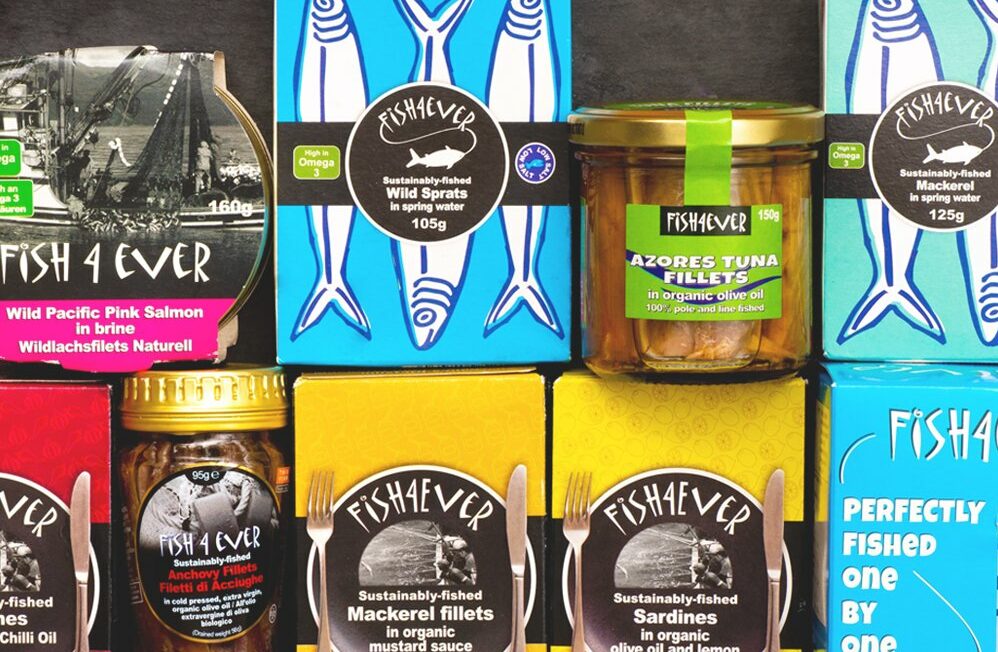The best BBQ Delivery Boxes in the UK from small sustainable British Farms
Farmed fish are often marketed as being the sustainable choice, but nothing could be further from the truth for many carnivorous species, such as salmon. Caroline Bennett, founder of Sole of Discretion, explains more:
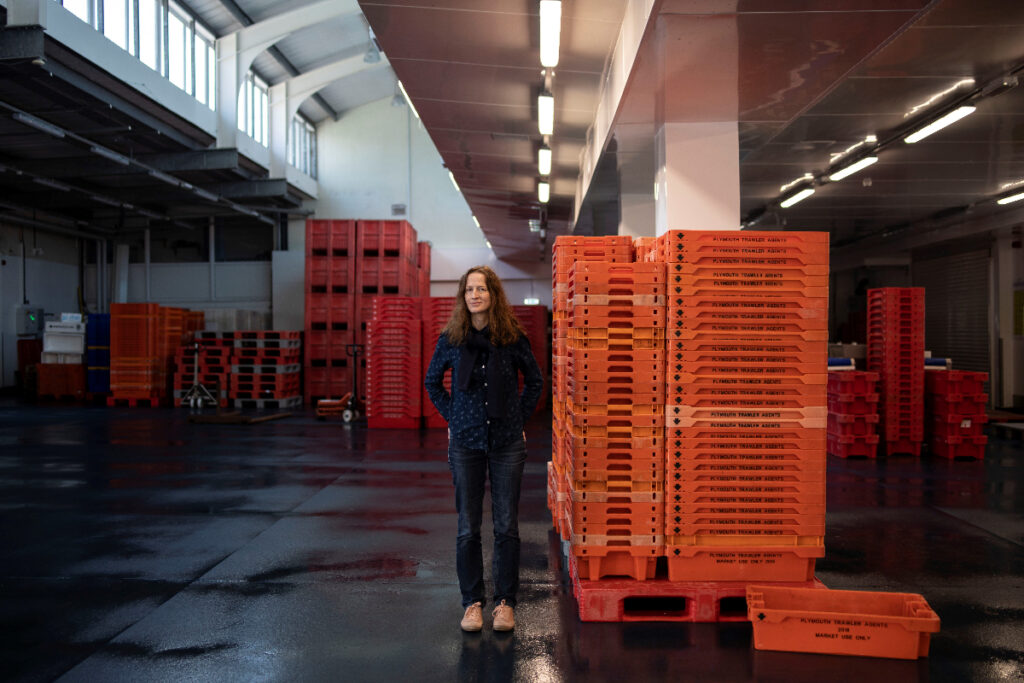
“Salmon farms dump millions of dead fish a year, if the same happened to lambs or cows on land there would be an outcry!”
Caroline Bennett
“Salmon are voracious carnivores, their natural diet is made up of eating smaller fish – in fact, it’s shrimp that gives them their incredible colour.
So, salmon bred on farms from Scotland to Northern Ireland are fed wild fish, known as fishmeal. And a lot of it. For every 1kg of farmed salmon produced, they are fed up to 3kg of wild fish (and other foods, but more of that later).
60 million tonnes of fish are landed annually by the industrial fleet for human consumption. Over half as much isn’t caught for human consumption; 26 million tonnes are landed by the industrial fleet to turn into fishmeal, while 10 million tonnes are simply discarded, dead in the sea.
Daniel Paulys research
This is a huge concern as wild fish stocks dwindle. So salmon farmers are trying to find alternatives in their feed including algae, insects, and increasingly, vegetable oil. But, like any form of farming, feeding an animal something that doesn’t appear in its natural diet has its risks. Think BSE.
It raises questions about the health benefits of eating salmon for humans. It also impacts taste and nutrition.
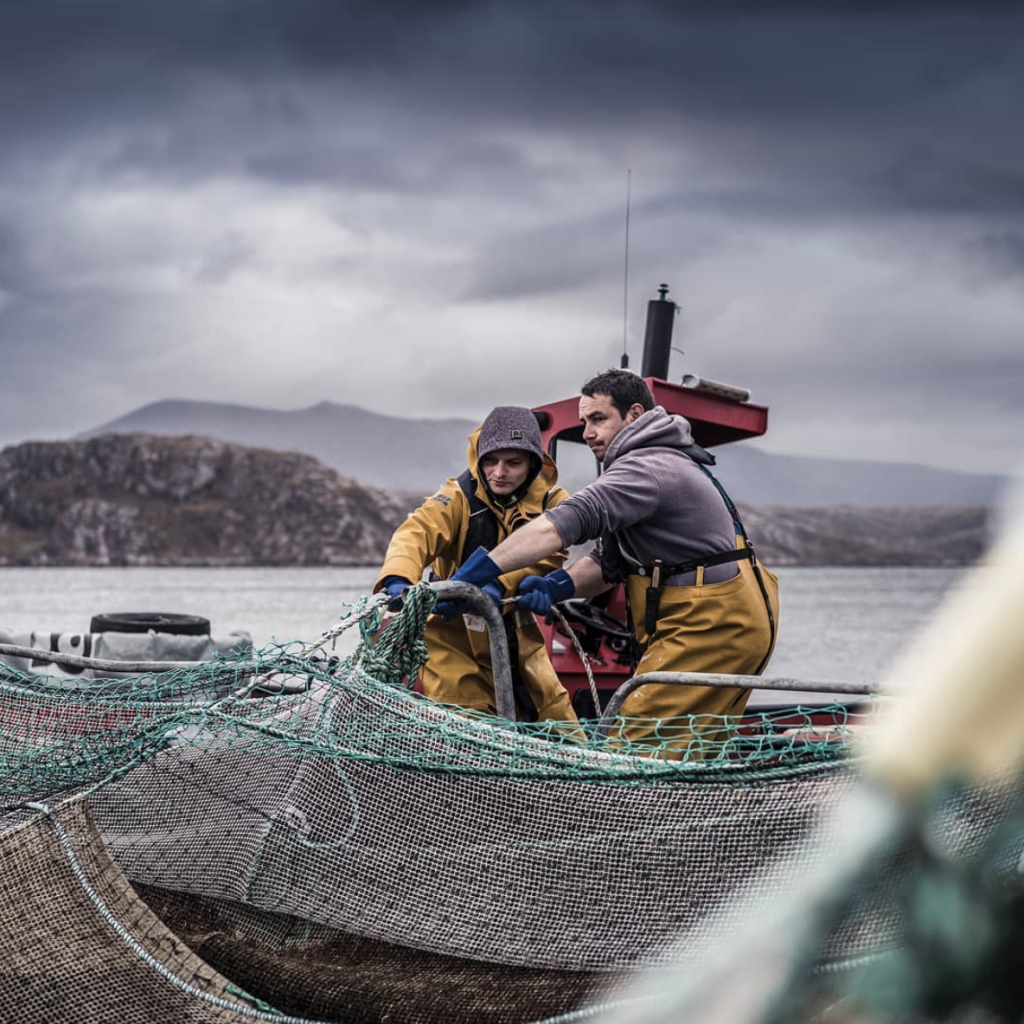
Salmon farms linked to human hunger and migration?
But let’s backtrack for a moment. Where are all these fish coming from, you asked? Or maybe you didn’t. But now that you think about it, it’s a good question.
Much of the wild fish caught to feed salmon and other farmed fish are caught by developed countries’ industrial fleets in the developing world’s seas.
There are plenty of examples of European boats buying the fishing rights to fish off the fertile North African coast, leaving the locals in Mauritania, Senegal and Morocco no longer able to fish in their own waters.
We are fundamentally taking fish from the developing world to feed salmon. On what level can that be classed as ethical or sustainable?
This could very feasibly be a contributing factor to some of the economic migration from these countries. When young people are unable to earn a living in their own fishing communities they are forced to look further afield for work and potentially risk their lives for the chance of a better future in the West.
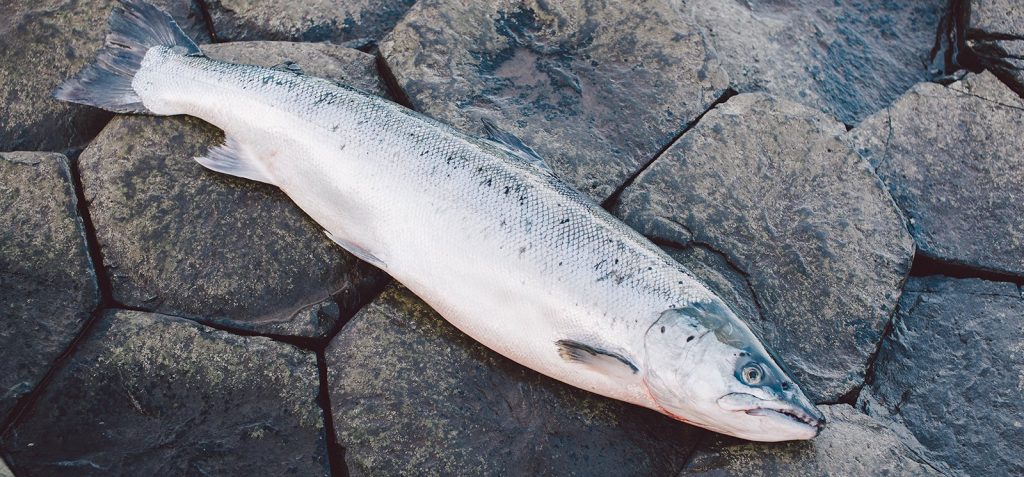
Sustainable salmon: you are what you eat
You are what you eat, but regulations make it extremely difficult to know exactly what that is. Farmed fish are vulnerable to disease, so chemicals are used to prevent the growth of lice (a huge problem). There are different rules for different farms and regions; antibiotics are used to treat illness in land-based farms but not Scottish sea pens, any longer – though they are still used in the hatcheries. Growth hormones are also used in some parts of the world to make salmon grow fatter quicker. All which we ingest when we eat them. Yum.
Then there’s the not-so-small issue of pollution. The feed, fish faeces and chemicals all impact the surrounding marine environment. Did you know that salmon farms are essentially net cages in the sea?
This means the wider ocean is also being polluted. And, when farmed salmon escape they breed with wild salmon. But the farmed salmon have been biologically changed by being enclosed, eating poor-quality diets (the fish they’re being fed ain’t as fresh as they should be!) and being fed growth hormones/antibiotics etc. This has a detrimental impact on the biology of the wild salmon, even impairing their future ability to breed.
Of course, wild fish are also suffering from the effects of pollution in the sea and can carry high levels of mercury or PCBs (man-made chlorinated industrial chemicals) in their flesh. Some of which are being fed straight back to the farmed salmon, doubling up on impacts…
Is any farmed salmon sustainable?
Not all salmon farms are the same. But, the environmental havoc and immense sugffering “apply to all types of farmed salmon, whether they are certified, so-called ‘organic’, sold fresh or smoked. Certification labels are no guarantee for sustainability – breaches of their standards are frequently ignored, and almost never result in a loss of accreditation for the farm,” report Off The Table, a movement by chefs, restaurants, writers, caterers and food lovers, to campaign to take farmed salmon off the table.
To quote Frantz and Catherine Collins, authors of Salmon Wars: “It’s increasingly clear that “eating Atlantic salmon from open net salmon farms is the wrong choice for our health and the health of our environment. Responsible consumers should avoid these inhumanely, unsustainably raised fish.”
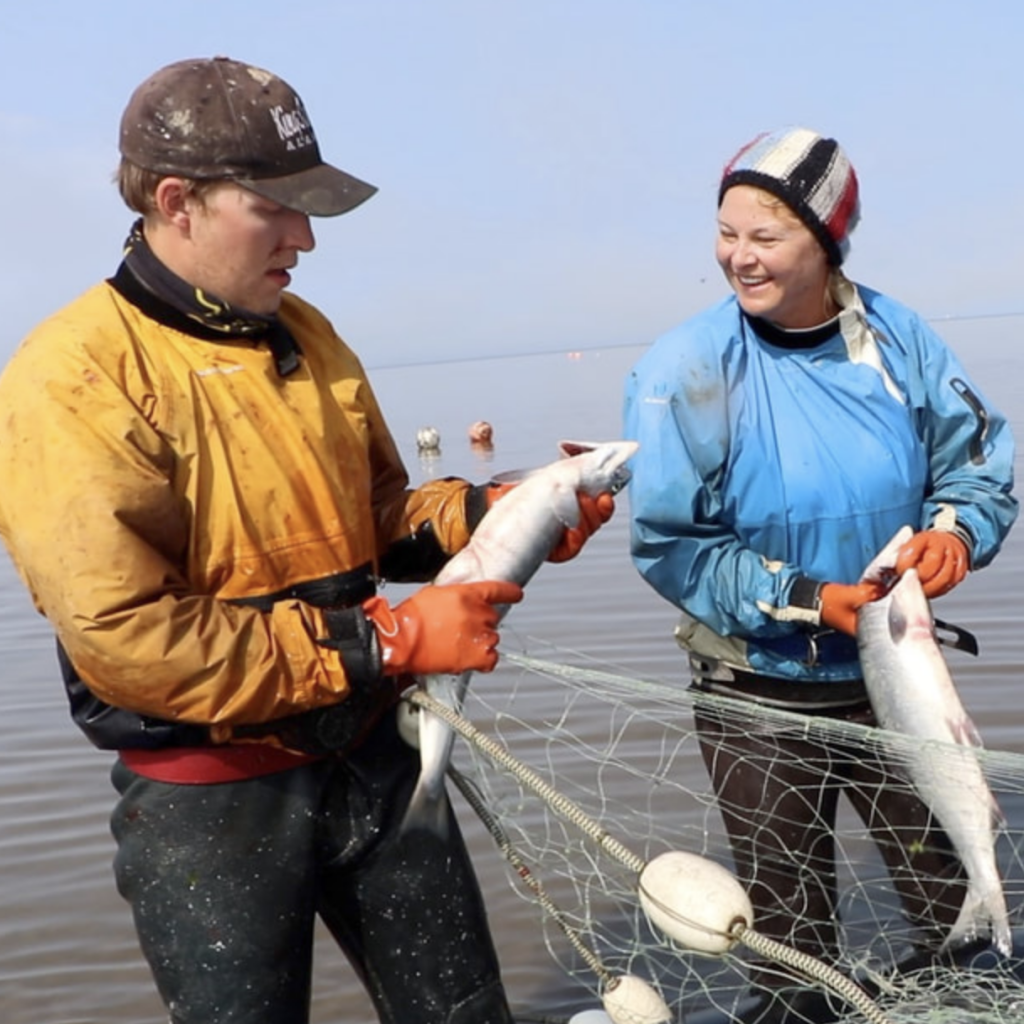
Sustainable wild salmon: Alaskan Wild Salmon
Sole of Discretion generally encourages people to move away from farmed fish and eat wild fish, from both a public health point of view and with regards to damage to the marine environment. And when it comes to salmon, Alaskan Wild Salmon is up there with the best of them.
Our ethos at Sole is to put the fisher at the heart of all decisions, so we can continue the dialogue on the protection of the seas. To ensure we are doing the right thing in prioritising wild over farmed salmon, we went to Alaska on a once-in-a-lifetime trip, to meet the fishers and learn more about how and why the wild salmon usually thrives so well in this wild hinterland.
Alaskan salmon is one of the world’s best-managed fisheries, where sustainability is carefully monitored and fishing is heavily restricted; we were frequently told that the future of wild salmon and the environment are more important than the immediate opportunities for harvest.
COOKING WILD SALMON
When cooking wild salmon, be careful not to overcook it as it’s easy to do if you are used to cooking fatty farmed salmon – best to leave it a little pink in the centre.
As a wild resource, there is variability in the number of salmon that return to the freshwater to spawn annually.
Managers in Alaska set ‘escapement goals’ to ensure enough fish return safely to the freshwater spawning grounds to reproduce. Biologists account for natural fluctuations in returns of salmon by managing the fisheries using real-time data.
Wild salmon species:
For our Sole customers, we aim to offer an alternative to farmed salmon by selling wild at a comparable price. In our opinion, it’s a much superior-tasting fish.
There are five different species of wild Pacific salmon in Alaska: Chinook, Coho, Sockeye, Keta and Pink.
They vary in their breeding and foraging patterns, which affects the texture and tastes differently. But as a rule, when compared to farmed salmon, the colour is a deeper, rich orangey-pink, with denser, firmer flesh. It is also less oily because the salmon are constantly swimming and migrating long distances.
We buy Sockeye and undervalued Keta:
Keta salmon
Our Keta comes from two different fisheries. One from indigenous fishers near the Kotzebue Sound to the north of the Bering sea; the other from South East Alaska, Crawfish Bay.
Keta hatch and live in fresh water for three-four months before swimming out to sea. After three to four years they return to the river they were born to spawn and die.
Both are caught by gill net and we can trace these right back to the boat.
Sockeye salmon
Our sockeye is caught by Yakobi, who for the first time this year can offer full traceability back to the boat for some of the sockeye. Tyson is the main fisher we engage with at Yakobi, and he also catches Black Cod and Keta for us. Tyson fishes at the shore edge on dinghies using gill nets.
Sockeye salmon spend one to three years in lakes and streams and a further one to three years in the sea. They return to their place of birth to reproduce and die. They feed on plankton and small crustaceans, which accounts for the bright orange colour of the sockeye’s flesh.
Of course, we ship the Alaskan salmon, and never air freight it.
Where to buy sustainable seafood…
Here’s our top two favourite brands for buying genuinely sustainable fish:
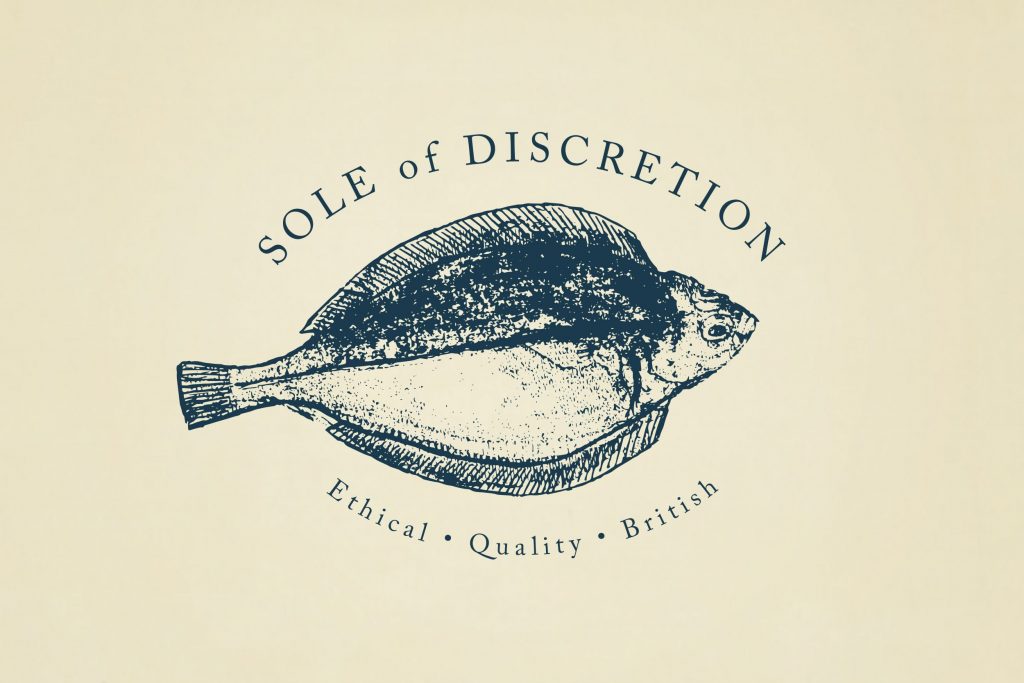
Sole of Discretion
Fresh fish, fished to the highest ethical standards.
Caroline Bennett, founder of Sole of Discretion. This piece is part of our ongoing series speaking to the people at the forefront of sustainability, pioneering a new approach to business.
Main image: Moshi Moshi

